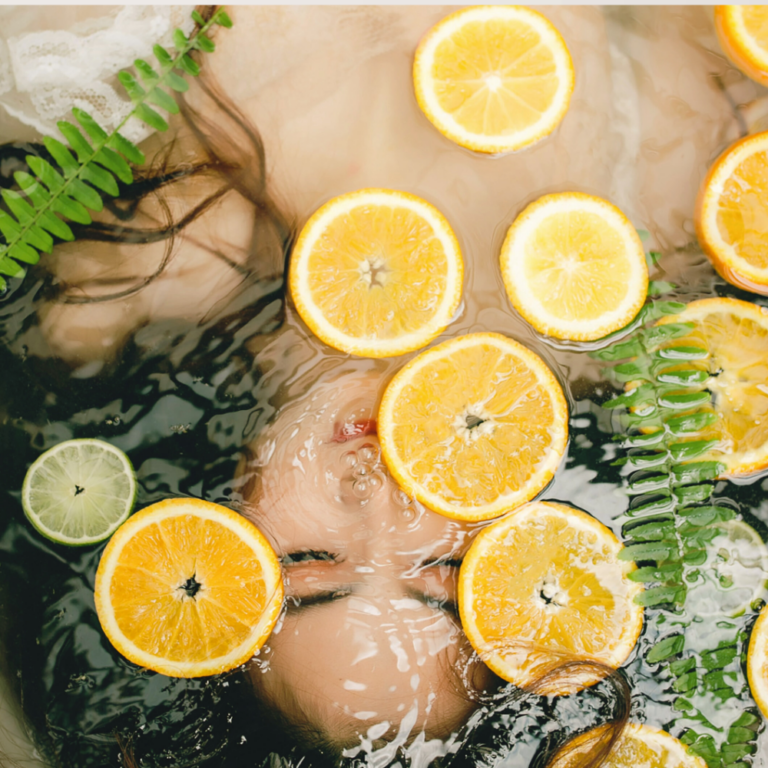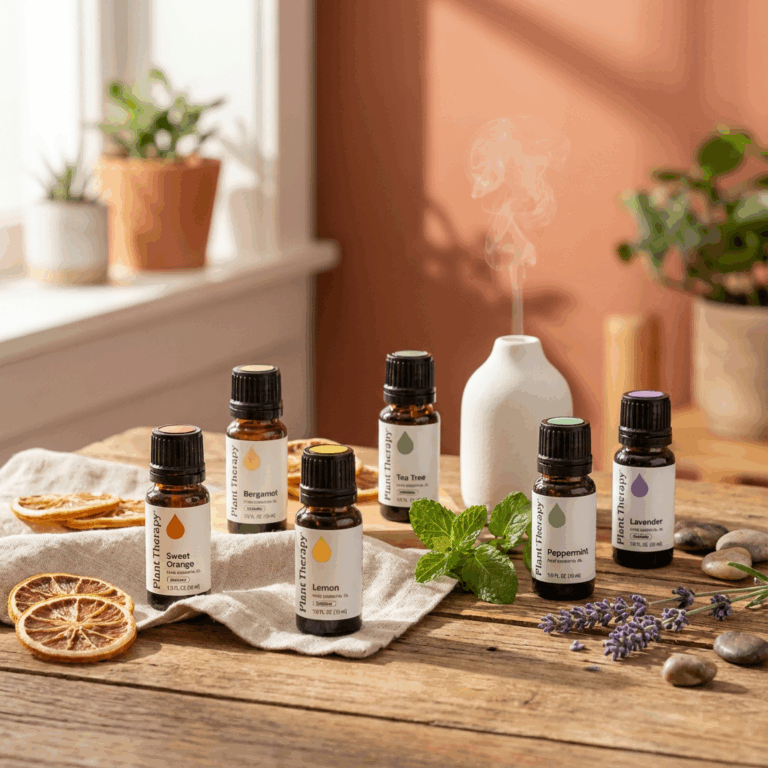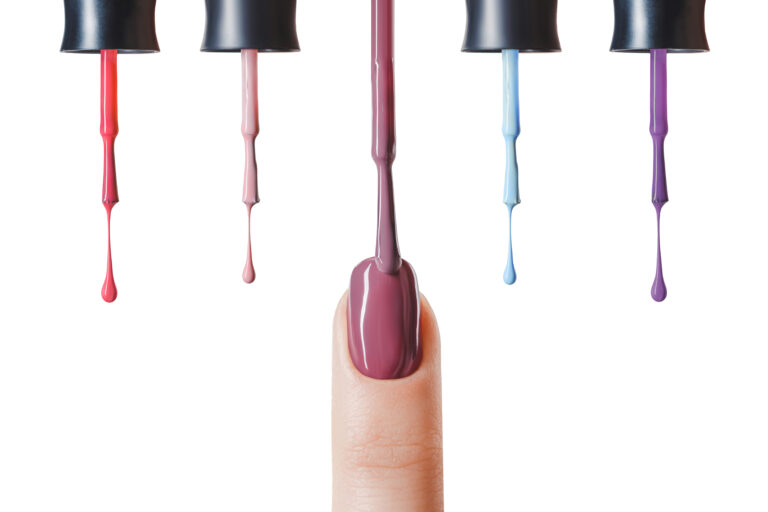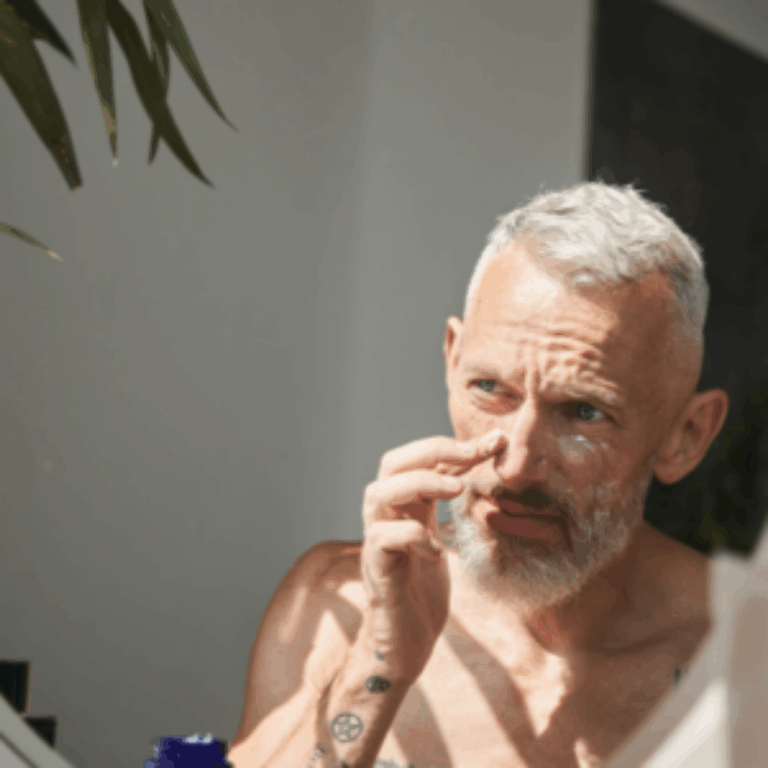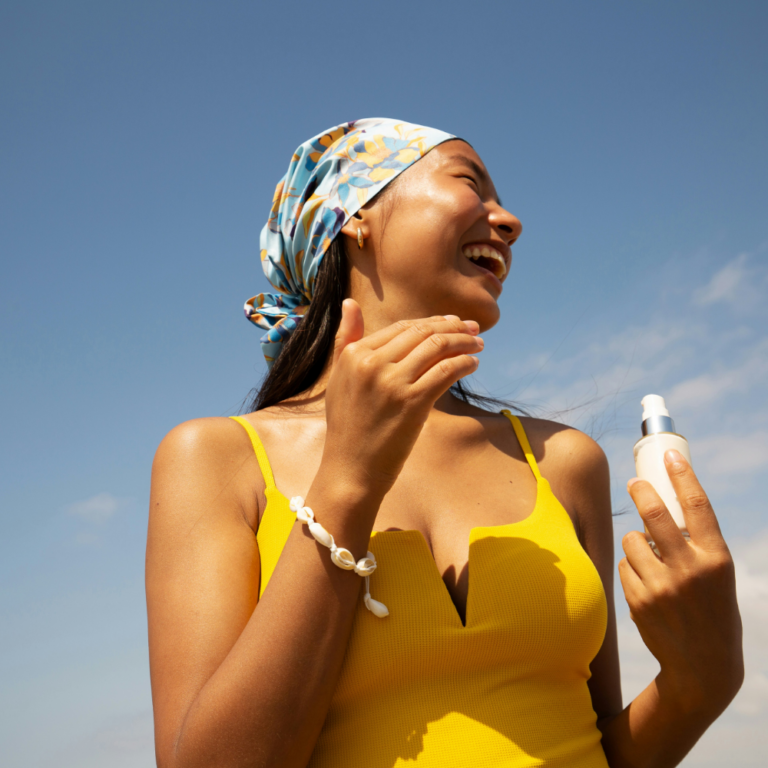
Key Takeaways
- Nontoxic makeup avoids parabens, phthalates, synthetic fragrance, and hidden plastics, using safer minerals and plant-based ingredients instead.
- Microplastics are common in mainstream cosmetics under names like polyethylene (PE), polypropylene (PP), PMMA, PET, or acrylates, and they can irritate skin while polluting waterways.
- To choose safer products quickly, scan labels for these plastics and look for trusted third-party certifications such as EWG Verified™, COSMOS, or Made Safe.
Have you ever turned over a makeup label and felt completely overwhelmed by the confusing chemical terms? You’re definitely not alone.
That’s where nontoxic makeup brands come in. These brands skip parabens, phthalates, synthetic fragrance, and sneaky microplastics, relying instead on skin-friendly minerals, plant-based oils, and botanicals. Choosing cleaner formulas protects your skin from irritation while cutting down the flow of plastics into the environment.
The Plastic Soup Foundation reports that a staggering 87% of products from the top ten cosmetic brands contain microplastics. That means you’ve probably worn them on your skin without even realizing it. But they don’t just vanish after you apply your makeup. Some microplastics can clog your pores or irritate sensitive skin, while others wash down the drain, polluting our waterways and eventually ending up in the food chain.
Thankfully, more and more beauty brands are showing that you can have stunning, high-performance makeup without the hidden plastics or harmful additives.
What Makes Makeup “Nontoxic”?
Nontoxic makeup brands create products without parabens, phthalates, synthetic fragrances, or hidden plastics, focusing instead on safer, skin-friendly ingredients.
While conventional makeup often relies on plastics or harsh chemicals to give products texture or staying power, clean formulas are designed to perform beautifully without the health risks or environmental fallout.
To provide you with extra peace of mind, many nontoxic brands also carry trusted third-party certifications such as EWG Verified™, COSMOS Organic, or Leaping Bunny cruelty-free, so you know exactly what you are putting on your skin.
Why Choosing Nontoxic Makeup Matters
Conventional cosmetics might look harmless in pretty packaging, but their ingredients often tell a different story. Here’s why avoiding microplastics and toxins in makeup is so important:
- Microplastics Can Act Like Chemical Sponges: These tiny particles don’t just sit idle—they can absorb and carry harmful chemicals, pesticides, and heavy metals. When applied to your skin, they increase the risk of irritation, allergies, and even potential hormone disruption.
- They Persist in Your Body and the Environment: Microplastics are nearly impossible to break down. Once washed off, they accumulate in waterways and marine life. But research also shows they can be inhaled or absorbed through skin, meaning they may linger in the body over time.
- Toxins Go Beyond the Plastics Themselves: Many makeup formulas with microplastics also contain parabens, phthalates, and synthetic dyes—chemicals linked to hormone disruption, reproductive harm, and skin sensitivities. Combined with microplastics, they create a cocktail of toxins your body doesn’t need.
- Your Daily Routine Adds Up: Even tiny exposures matter when they happen every day. From foundation in the morning to lip color at night, makeup with plastics introduces a constant stream of toxins to your skin and, indirectly, to the environment.
Choosing nontoxic makeup protects your skin from irritation while reducing the flow of microplastics and toxins into the environment.
The Problem With Microplastics in Makeup
Microplastics aren’t always visible. Unlike glitter, which you can see sparkle, most are ground so fine they’re invisible to the naked eye. They’re added to makeup for texture, smoothness, and staying power, but the tradeoff is far from harmless.
ℹ️ Note: In cosmetics, many so-called “microplastics” are actually synthetic polymers — plastic-based ingredients added for texture, film, or shine. While not consistently solid particles in the product, they behave like microplastics once they enter the environment because they persist, do not break down easily, and can carry toxic chemicals.
Here’s why microplastics in cosmetics are such a concern:
- Hidden in Plain Sight: You won’t see “microplastic” on the label. Instead, look for names like polyethylene (PE), polymethyl methacrylate (PMMA), polypropylene (PP), or acrylates copolymer. These are all forms of plastic added as binders, fillers, or film formers.
- Toxic Carriers: Microplastics act like tiny chemical sponges. They can absorb pesticides, heavy metals, and industrial toxins in the environment. Once applied to skin—or washed down the drain—they can release these substances, increasing exposure risks for both humans and wildlife.
- Not Just Skin Deep: Research suggests microplastics can be absorbed through the skin, inhaled through powders, or ingested when lipstick or lip gloss is worn. Once in the body, they may contribute to inflammation, oxidative stress, and hormonal disruption.
- Persistent Polluters: These plastics don’t break down. Every swipe of mascara or dab of foundation washed away adds to the billions of microplastic particles entering rivers, oceans, and drinking water supplies every year. Studies have found them in fish, shellfish, sea salt, and even human blood.
- Regulation Gaps: Shockingly, many countries lack strict regulations banning microplastics in cosmetics. This means brands can freely use them while still marketing products as “long-lasting” or “dermatologist-tested.” Without third-party certifications, it’s nearly impossible for consumers to know what’s truly safe.
Microplastics in cosmetics harm both personal health and ecosystems, making it essential to recognize and avoid them in your routine.
Don’t Miss: Microplastics in Cosmetics: A Complete Guide to Hidden Beauty Industry Pollutants Think “clean beauty” means plastic-free? You might be surprised—get the full story here. Read more →How to Spot (and Avoid) Microplastics in Makeup
One of the biggest challenges with avoiding microplastics is that they rarely show up as “microplastic” on a label. Instead, they hide behind long chemical names. With a bit of know-how and the right resources, you can spot them before they sneak into your makeup bag.
🔎Learn the Common Ingredient Names
Here are some of the plastics most often found in cosmetics, why companies use them, and why they’re risky:
- Polyethylene (PE) (synthetic plastic) – Used for silky texture or as tiny beads in scrubs. These beads don’t biodegrade, building up in waterways and wildlife.
- Polypropylene (PP) (synthetic plastic) – Adds thickness and a smooth texture to powders and creams. It can carry toxic chemicals into the body and the environment.
- Polymethyl methacrylate (PMMA) (synthetic plastic) – Creates a “soft focus” or blurring effect. Linked to skin irritation and long-lasting microplastic pollution.
- Polyethylene terephthalate (PET) (synthetic plastic) – Creates shine in lip gloss or shimmer in eyeshadow. May leach hormone-disrupting chemicals and cause oxidative stress.
- Nylon-12, Nylon-6 (synthetic plastics) – Used for slip and spreadability in powders and foundations. Release harmful byproducts and add to persistent plastic waste.
- Acrylates copolymer / Acrylates crosspolymer (synthetic plastics) – Common in waterproof and long-wear makeup to form a flexible film. Non-biodegradable and can trigger skin sensitivities.
⚠️Pay Attention to High-Risk Products
Microplastics are especially common in:
- Glitter and shimmery powders — plastics like PET are used to create shine and sparkle.
- Long-wear foundations and primers — polymers (such as acrylates) form a flexible film that makes makeup last longer.
- Waterproof mascaras and eyeliners — plastic-based ingredients create a water-resistant barrier.
- Matte liquid lipsticks — microplastics add smoothness and help pigment stick for all-day wear.
✅Choose Transparent Brands
Most nontoxic makeup brands are proud to tell you they’re free from microplastics, parabens, and other harsh additives. They’ll often use recyclable or refillable packaging too, and be upfront about where their ingredients come from. If a brand isn’t clear about what’s not in their products, that’s usually a red flag.
Learning to identify microplastic ingredients empowers you to choose safer, nontoxic makeup and avoid hidden pollutants.
Benefits of Using Nontoxic Makeup
Switching to nontoxic, microplastic-free makeup isn’t just about avoiding harm — it’s about unlocking real benefits for your skin, your health, and the planet. Here’s why the swap is worth it:
- Healthier Skin, Long-Term: Nontoxic makeup skips the plastic fillers, parabens, and synthetic fragrances that can clog pores or trigger irritation. Instead, it uses antioxidants, natural minerals, and plant-based oils that nourish and protect your skin over time. Many people notice fewer breakouts, less dryness, and a healthier glow.
- Less Risk of Allergic Reactions and Sensitivities: Microplastics and artificial additives can worsen conditions like eczema, rosacea, and acne. Clean formulas with simple, natural ingredients are gentler, making them better for sensitive or reactive skin.
- Peace of Mind from Safer Ingredients: Conventional makeup is often underregulated, meaning harmful chemicals and plastics can be legally added without much oversight. By choosing certified clean beauty brands, you get the reassurance that your products have been vetted for safety.
- Better for the Planet: Every microplastic-free product you buy is one less source of pollution in waterways and oceans. Nontoxic brands often go a step further with recyclable packaging, eco-friendly sourcing, and cruelty-free practices. Your beauty routine becomes a way to reduce waste instead of adding to it.
- Empowerment and Mindful Living: Choosing nontoxic makeup is not only about your health but also about your values. Every purchase supports brands that prioritize safety, transparency, and sustainability, helping move the beauty industry toward cleaner and more responsible practices.
Switching to nontoxic, microplastic-free makeup means healthier skin, fewer toxins, and a beauty routine aligned with your values.
10 Best Nontoxic Makeup Brands Without Microplastics
Fortunately, certified clean beauty brands such as Attitude, Lavera, Inika, and Ere Pérez demonstrate that makeup can deliver professional results without relying on plastics, parabens, or synthetic toxins.
These companies go beyond avoiding harmful ingredients by committing to third-party certifications, sustainable packaging, and cruelty-free practices, proving that nontoxic makeup can be both safe for your skin and better for the planet.
ATTITUDE
$16-60

Attitude is one of my favorite brands, not just for makeup, but also for their skincare and cleaning products. Based in Montreal, Canada, the company was founded by J.F. Bernier and Benoît Lord with a mission to make everyday essentials safer and more sustainable.
Their Oceanly makeup line is the world’s first solid, EWG Verified™ makeup packaged in biodegradable cardboard tubes. For every product sold, Attitude funds reforestation through Eden People + Planet (formerly Eden Reforestation Projects) and One Tree Planted.
Key Features and Product Highlights:
- Solid makeup sticks for foundation, blush, bronzer, and concealer, all EWG Verified™.
- Made with botanicals and mineral-based pigments, free from parabens, phthalates, sulfates, and synthetic fragrances.
- Eco-friendly packaging in biodegradable cardboard tubes.
- Standout product: Oceanly Foundation Stick, enriched with hyaluronic acid for lightweight hydration.
- Packaging: Plastic-free cardboard tubes for makeup, recyclable & biodegradable packaging across categories, FSC-certified paperboard for many personal care products.
- Certifications: EWG Verified™, PETA-certified vegan & cruelty-free, EcoLogo® (UL) for reduced environmental impact, Carbon neutral, FSC-certified paperboard.
Lavera
$10-20
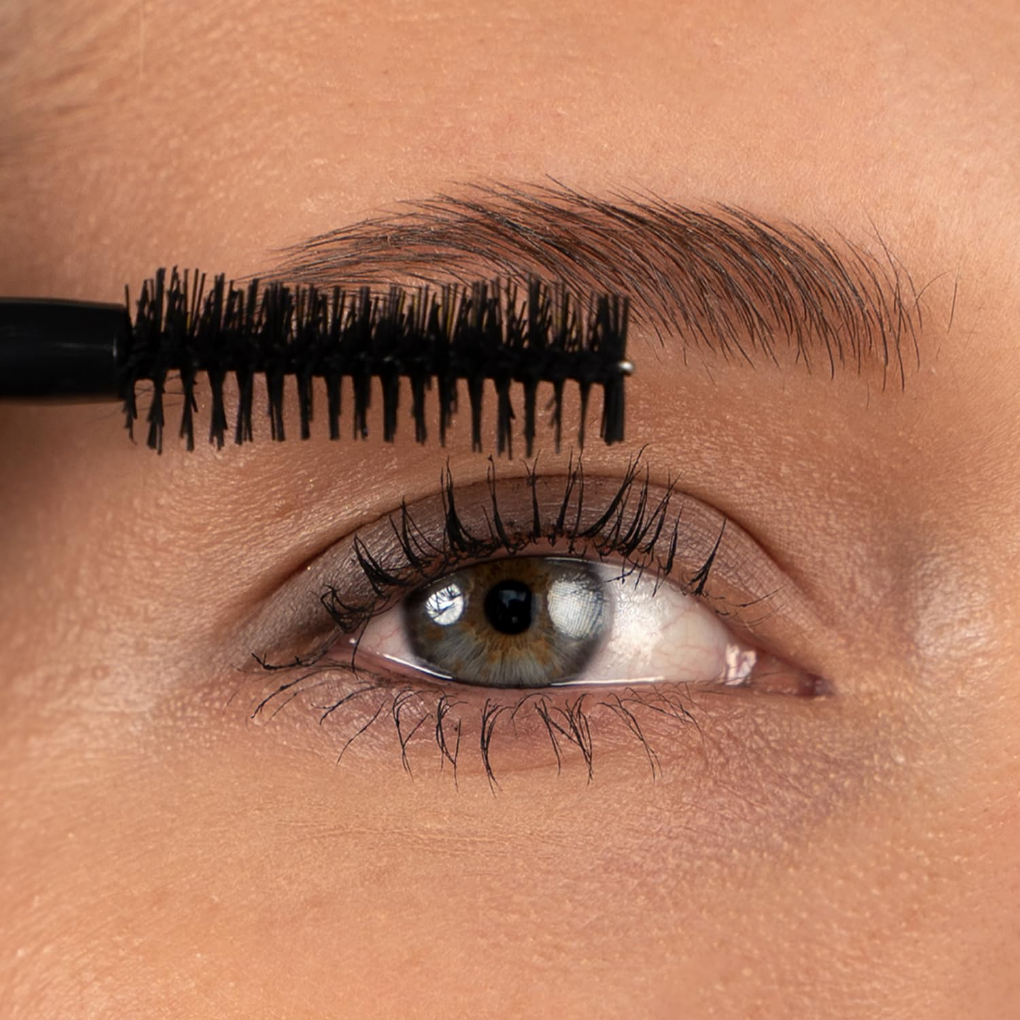
Lavera is a German natural beauty pioneer founded in Hanover in 1987 by Thomas Haase. Born from his own sensitivity to skincare ingredients, the brand delivers gentle, honest formulations that stay true to its name—verum, or “truth.”
Lavera supports reforestation through the Lavera Forest Project in Costa Rica and sustainability projects in Germany. They operate as a climate-neutral company, powered entirely by green electricity, and have pledged to eliminate virgin plastic from their bottles by 2025.
Key Features and Product Highlights:
- Hyaluron Liquid Foundation: A lightweight, silky formula with hyaluronic acid and organic almond oil that hydrates deeply and blends effortlessly for a radiant, natural finish—without microplastics or synthetic ingredients.
- Butterfly Effect & Volume Mascaras: Create volume and definition using nature-derived ingredients, suitable even for contact lens wearers, and formulated without harsh synthetics.
- Mineral Eyeshadow Quattro & Soft Eyeliner: Talc-free, mineral-based eyeshadows with rich colors and glowing finishes, and a soft, blendable eyeliner made with jojoba, shea butter, and candelilla wax.
- Soft Glow Highlighter: Lightweight and naturally fragranced with nourishing plant oils like sea buckthorn and mallow; provides a subtle, healthy glow.
- Packaging: Plastic-free cardboard for many products, bottles made from 100% recycled plastic, FSC-certified and recycled paperboard, and a long-term commitment to use at least 70% recycled or renewable materials, with 85% of packaging recyclable or biodegradable by 2025.
- Certifications: NATRUE natural cosmetics, Vegan Society certified, Green Brand Award, FSC-certified packaging, and a climate-neutral company.
Inika Organics
$25-60
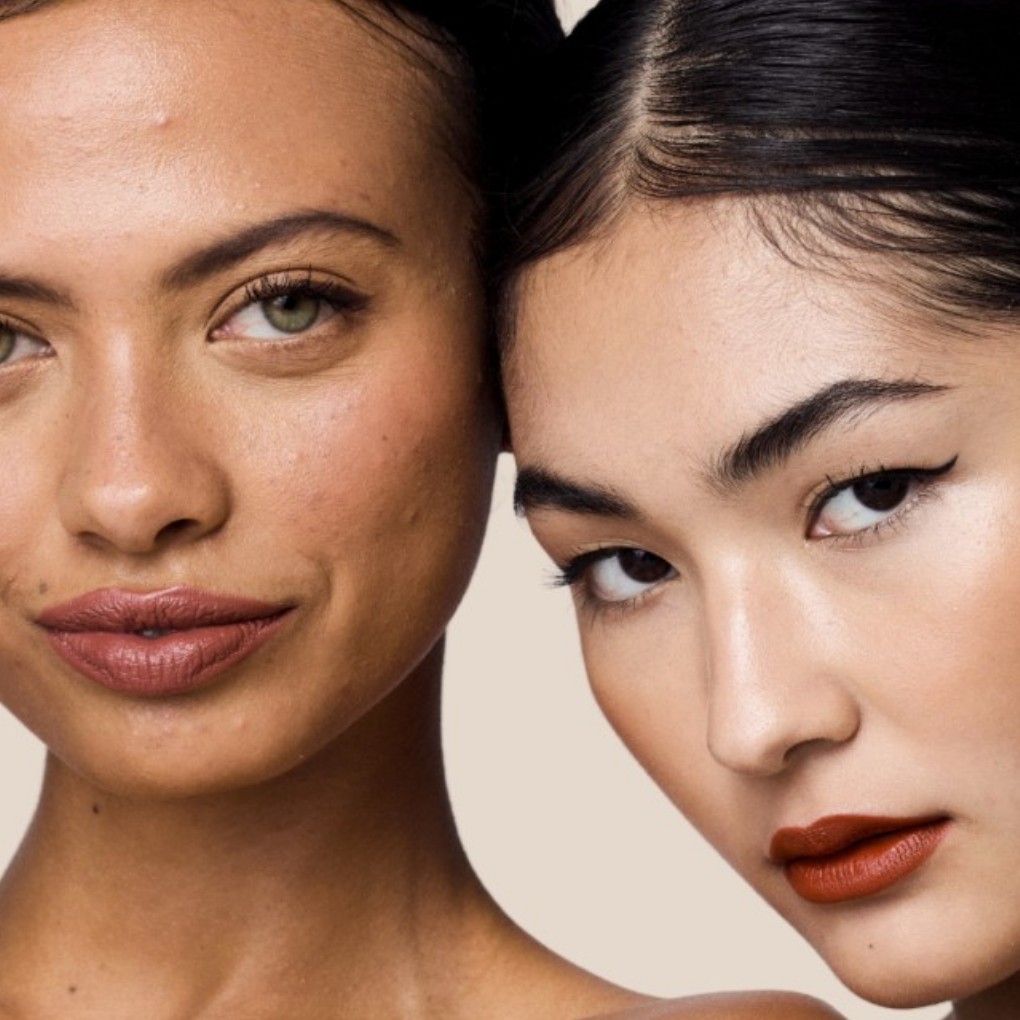
Inika Organic is an Australian brand founded in Sydney in 2006 to prove that high-performance makeup can also meet the highest safety and sustainability standards.
Today, their products are sold in over 30 countries, and the company operates as both carbon neutral and plastic neutral by funding climate projects through the Carbon Neutral Plant-a-Tree Program and supporting global plastic waste recovery with the Plastic Bank initiative.
Key Features and Product Highlights:
- Loose Mineral Foundation SPF 25: A bestselling mineral-based powder foundation enriched with zinc oxide for natural sun protection.
- Certified Organic Liquid Foundation: Provides full coverage while nourishing skin with hyaluronic acid, antioxidants, and botanicals.
- Long Lash Vegan Mascara: A cult-favorite mascara that lengthens and defines lashes using plant-based waxes, free from parabens, phthalates, or synthetic polymers.
- Certified Organic BB Cream: Combines skincare and makeup with niacinamide and hyaluronic acid for a hydrating, dewy finish.
- Packaging: Inika has reimagined its packaging to reduce environmental impact, using aluminum, glass, PCR (post-consumer recycled) plastics, FSC-certified paperboard, and plant-derived bioplastics from sugarcane.
- Certifications: Certified Organic (COSMOS, OFC Australia), Vegan Society certified, PETA-certified cruelty-free, Halal certified, Carbon Neutral certified, Plastic Neutral certified, FSC-certified packaging.
Ere Pérez
$24-44
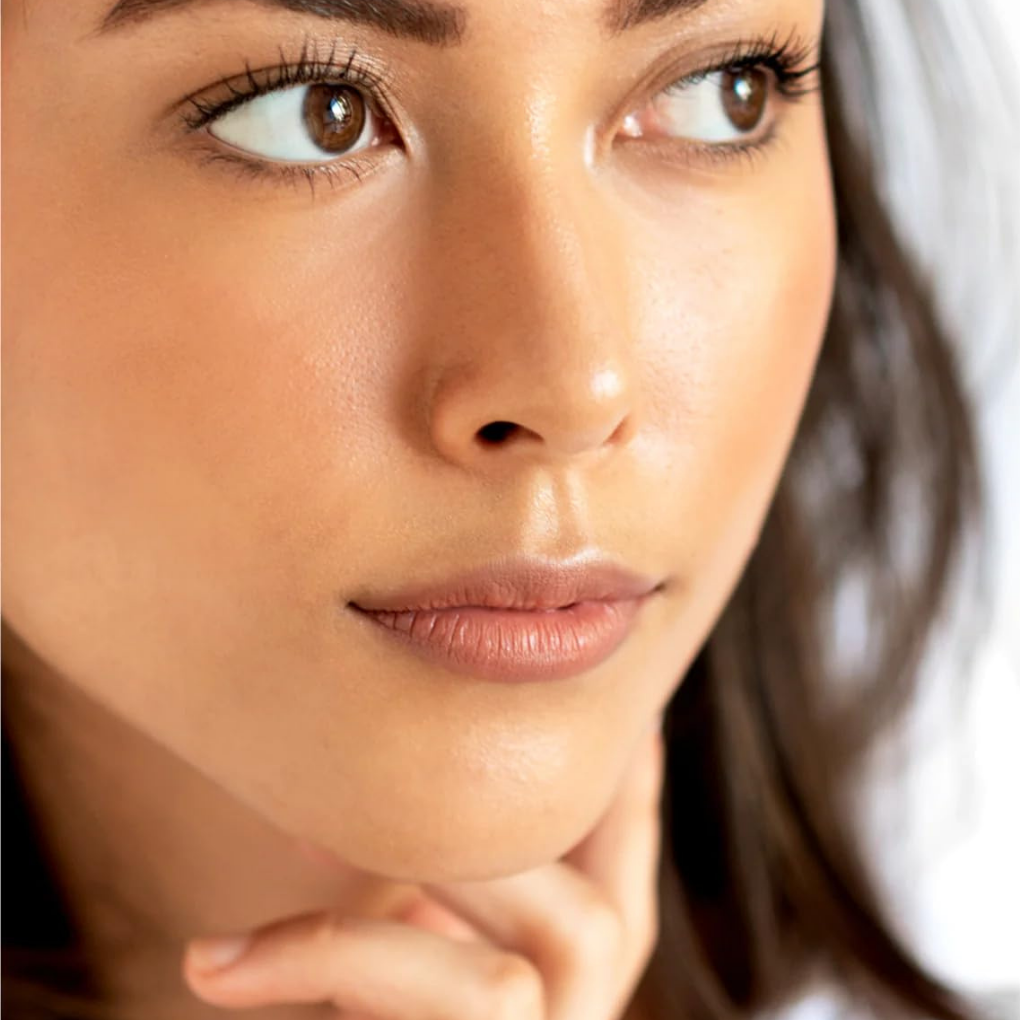
Ere Pérez is an Australian brand founded in Sydney in 2002 by Ere Pérez, who drew on her Mexican heritage to create simple, plant-based cosmetics that are gentle yet effective.
The brand is carbon neutral and a member of 1% for the Planet, contributing to global environmental nonprofits while prioritizing sustainable ingredient sourcing and eco-friendly packaging.
Key Features and Product Highlights:
- Carrot Colour Pot: A multipurpose lip and cheek balm made with botanical extracts and antioxidants, free from parabens, phthalates, and synthetic fragrances.
- Coco Crayon: Creamy, biodegradable lip and cheek color in plastic-free packaging.
- Avocado Waterproof Mascara: Conditions and strengthens lashes with avocado oil, providing volume without synthetic polymers.
- Arnica Concealer: Packed with anti-inflammatory botanicals, this concealer is designed to calm redness and irritation while covering imperfections.
- Packaging: Ere Pérez is steadily reducing its use of virgin plastic, moving toward glass jars, aluminum compacts, FSC-certified paperboard, and refillable packaging systems. Their mono-material aluminum designs are fully recyclable and built to last, reflecting their commitment to circular beauty.
- Certifications: PETA-certified vegan & cruelty-free, Carbon Neutral certified, FSC-certified packaging, 1% for the Planet member.
Zao
$16-38
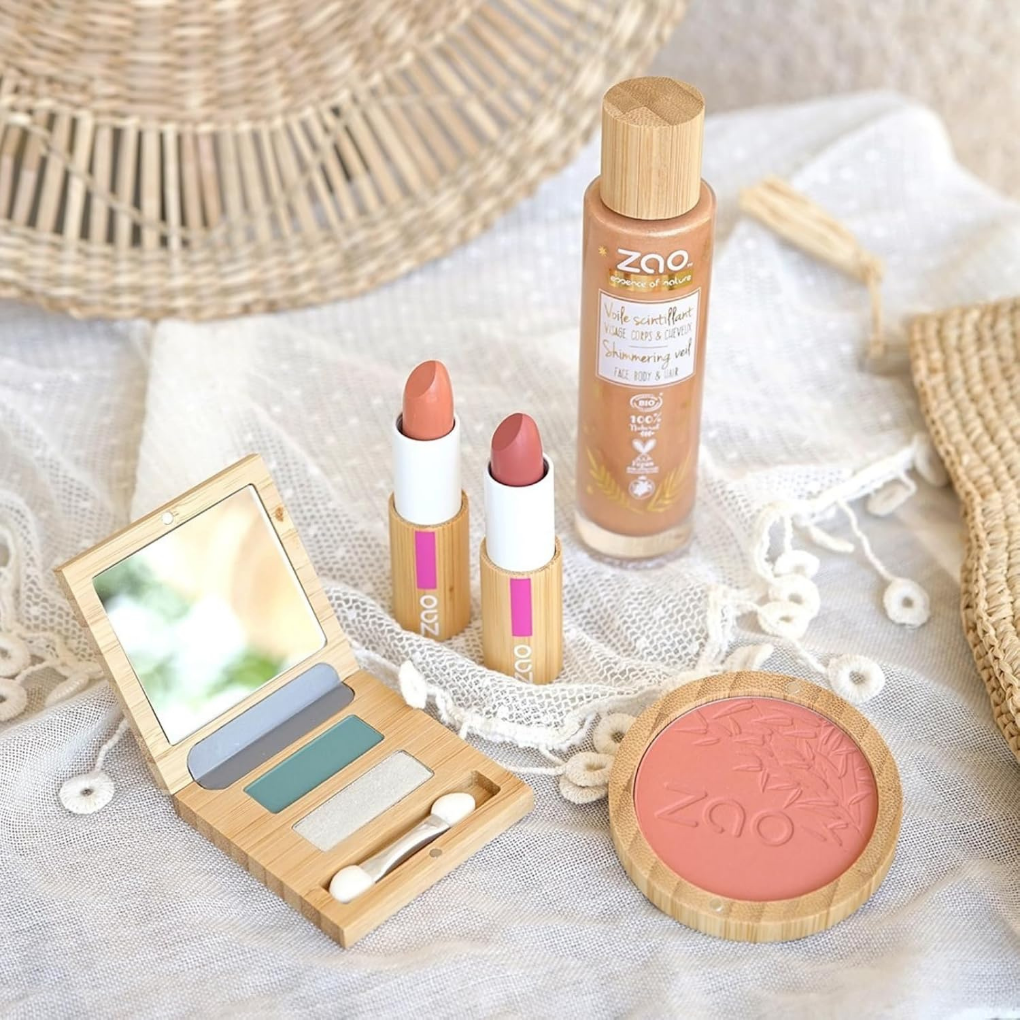
Zao was founded in France in 2012 by David Reccole and his team, inspired by Asian philosophies of balance (Zen and Tao).
The brand is best known for its refillable bamboo makeup system, designed to dramatically cut down on waste while still offering high-quality, natural cosmetics.
Zao is also a carbon-neutral company, funding reforestation projects and sourcing FSC-certified bamboo from sustainable forests.
Key Features and Product Highlights:
- Stick Foundation: Mineral-based foundation enriched with botanicals and antioxidants, providing natural coverage without parabens, phthalates, or sulfates.
- Refillable Compact Powders: Silky powders that slot into reusable bamboo cases, reducing single-use packaging.
- Volume & Curl Mascara: Made with organic shea butter and acacia gum, defining without synthetic polymers.
- BB Cream with SPF: Lightweight coverage and hydration, formulated with zinc oxide for natural sun protection.
- Packaging: Zao’s signature bamboo cases are refillable, durable, and compostable. They use FSC-certified bamboo sourced from sustainable forests, FSC-certified paperboard, and glass or aluminum for select products.
- Certifications: Ecocert (COSMOS Organic), Vegan Society certified, PETA-certified cruelty-free, Carbon Neutral certified, FSC-certified packaging.
100% Pure
$21-55
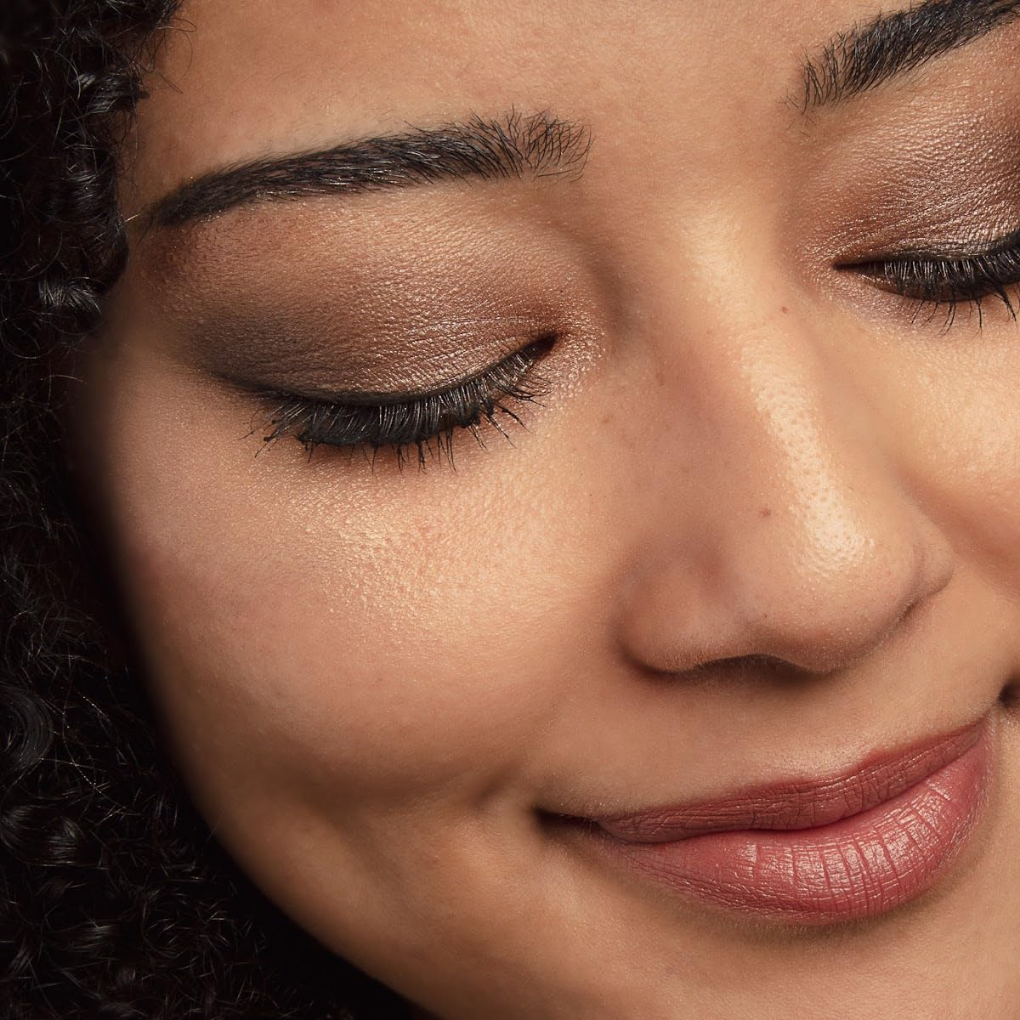
100% Pure was founded in California in 2005 by Susie Wang, James Wang, and Ric Kostick with a mission to create the cleanest beauty products possible.
They pioneered Fruit Pigmented® Makeup, where natural pigments from fruits, vegetables, tea, and cocoa replace synthetic dyes.
The company is a member of 1% for the Planet and partners with Trees for the Future to fund reforestation, while also running community programs like 10 to the Rescue, which helps feed shelter dogs.
Key Features and Product Highlights:
- Fruit Pigmented® Mascara: Colored with pigments from black tea and berries, nourishing lashes with botanicals and antioxidants.
- Cocoa Butter Matte Lipstick: Creamy texture with long-lasting natural color, free from parabens, phthalates, and synthetic fragrances.
- 2nd Skin Foundation: A serum-like foundation formulated with olive squalane, antioxidants, and natural minerals for a weightless finish.
- Pretty Naked Palette: A talc-free palette with fruit and vegetable pigments, offering versatile everyday shades.
- Packaging: 100% Pure uses recyclable glass, aluminum, PET plastic, and FSC-certified paperboard across its product lines. They are actively working to transition more products into glass and recycled materials, while reducing virgin plastic wherever possible. Packaging is often designed with simplicity for easier recycling, and refills are offered for select items.
- Certifications: Leaping Bunny certified cruelty-free, PETA-certified cruelty-free and vegan (select products), USDA Organic (for certain skincare), 1% for the Planet member, FSC-certified packaging.
River Organics
$12-47

River Organics is a small-batch beauty brand based in Wilmington, North Carolina, founded by husband-and-wife team Corinne and Fabien.
With backgrounds in art and natural product formulation, they created a line of plastic-free, zero-waste makeup that is gentle on skin and kind to the planet.
The company is carbon neutral and a proud member of 1% for the Planet, donating a portion of sales to vetted environmental nonprofits while keeping their supply chain intentionally small and sustainable.
Key Features and Product Highlights:
- Zero-Waste Concealer Stick: Creamy coverage made with organic oils and botanicals like shea butter and jojoba oil, enriched with antioxidants.
- Cream Blush Stick: Buildable color that doubles as a lip tint, packaged in compostable tubes.
- Illuminating Highlighter Stick: Adds a natural glow with plant-based oils, free from parabens, phthalates, sulfates, and synthetic fragrances.
- Bare Lip Balm: A nourishing vegan balm with candelilla wax, coconut oil, and cocoa butter in zero-waste packaging.
- Packaging: Every product is packaged in compostable paper tubes or FSC-certified cardboard, altogether avoiding single-use plastic. Labels are printed with biodegradable ink, and shipping materials are plastic-free. This makes River Organics one of the most authentically zero-waste makeup brands available today.
- Certifications: PETA-certified cruelty-free and vegan, Carbon Neutral certified, 1% for the Planet member, FSC-certified packaging.
Honest Beauty
$17-25
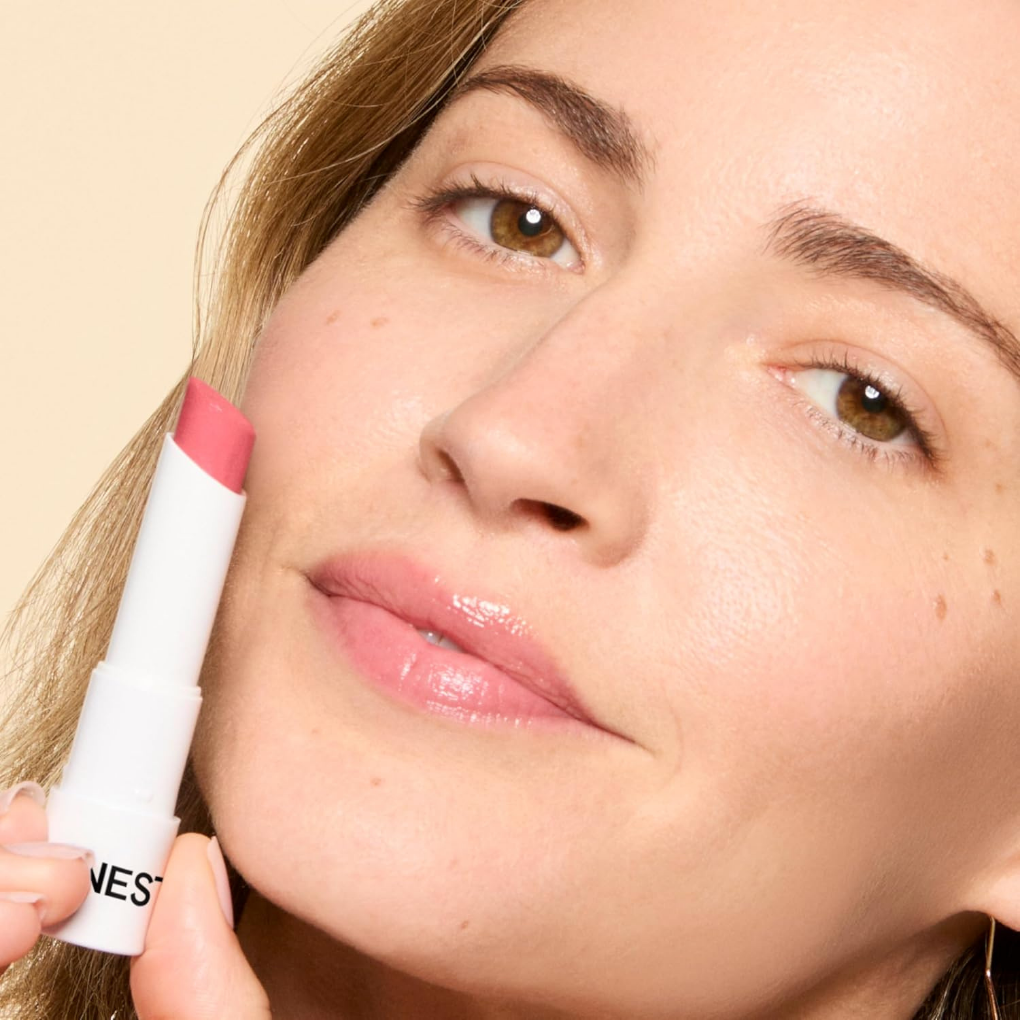
Honest Beauty was launched in 2015 by actress Jessica Alba as part of The Honest Company, with a mission to make clean, affordable beauty accessible to everyone.
The brand emphasizes ingredient transparency, formulating without parabens, phthalates, microplastics, or synthetic fragrances.
Honest Beauty also publishes Sustainability and Impact Reports, operates as a Certified B Corporation, and supports community health and environmental nonprofits.
Key Features and Product Highlights:
- Extreme Length Mascara + Lash Primer: Dual-ended mascara and primer that lengthens and defines without parabens, phthalates, or sulfates.
- Fresh Flex Concealer: A buildable concealer infused with hyaluronic acid and antioxidants for hydration and smooth coverage.
- CCC Clean Corrective Tinted Moisturizer SPF 30: Lightweight daily wear with mineral zinc oxide SPF and natural finish.
- Get It Together Eyeshadow Palette: Talc-free, mineral-based pigments in versatile shades for everyday looks.
- Packaging: Honest Beauty uses post-consumer recycled (PCR) materials, FSC-certified paperboard, and recyclable plastics in its packaging. The company is working toward more mono-material designs for easier recycling and continues to increase the percentage of PCR content across its product line.
- Certifications: B Corporation, Leaping Bunny certified cruelty-free, EWG Verified™ (select products), FSC-certified packaging.
Ogee Luxury Organics
$26-96
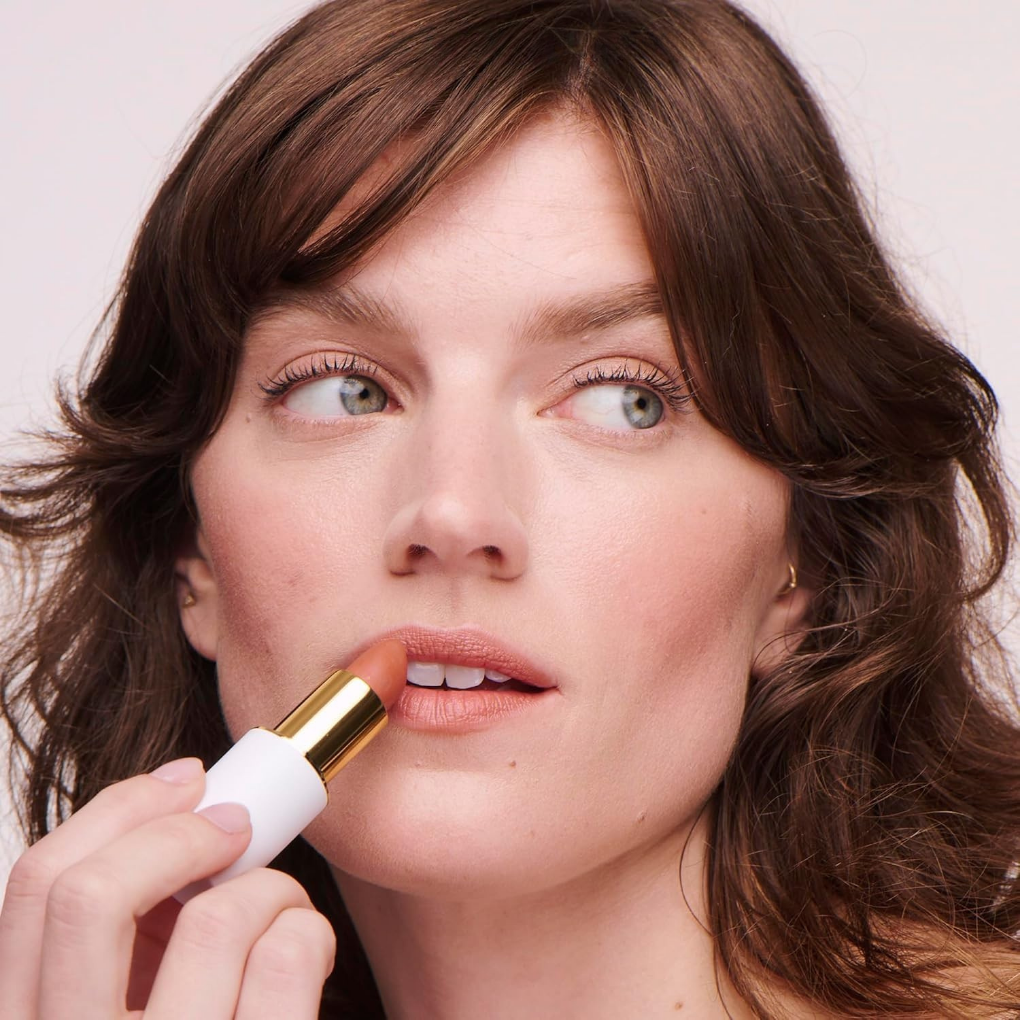
Ogee Luxury Organics was founded in Vermont in 2014 by a team of beauty industry professionals who wanted to create high-performance, luxury makeup and skincare using certified organic ingredients.
Their formulas highlight botanicals like jojoba oil and are designed to nourish skin while delivering professional results.
Ogee is a 1% for the Planet member, supporting vetted environmental nonprofits, and is also a carbon-neutral company investing in regenerative agriculture and climate projects.
Key Features and Product Highlights:
- Sculpted Face Stick: A multi-use foundation, contour, and bronzer stick made with certified organic botanicals and antioxidants for skin nourishment.
- Tinted Lip Oils: Luxurious lip color infused with plant-based oils to hydrate and protect.
- Sculpted Complexion Stick: Lightweight, buildable coverage enriched with hyaluronic acid and natural minerals.
- Beyond Clean Volumizing Mascara: A nourishing formula free from parabens, phthalates, sulfates, and synthetic fragrances.
- Packaging: Ogee uses premium, durable materials crafted to stay out of landfill. Packaging includes recyclable glass, aluminum, and FSC-certified paperboard. Their sculpted sticks and balms are built to last, and shipping materials are thoughtfully recycled and biodegradable.
- Certifications: NSF Organic (minimum 70% organic ingredients), COSMOS Organic, Leaping Bunny cruelty-free, FSC-certified packaging.
bareMinerals
$22-45
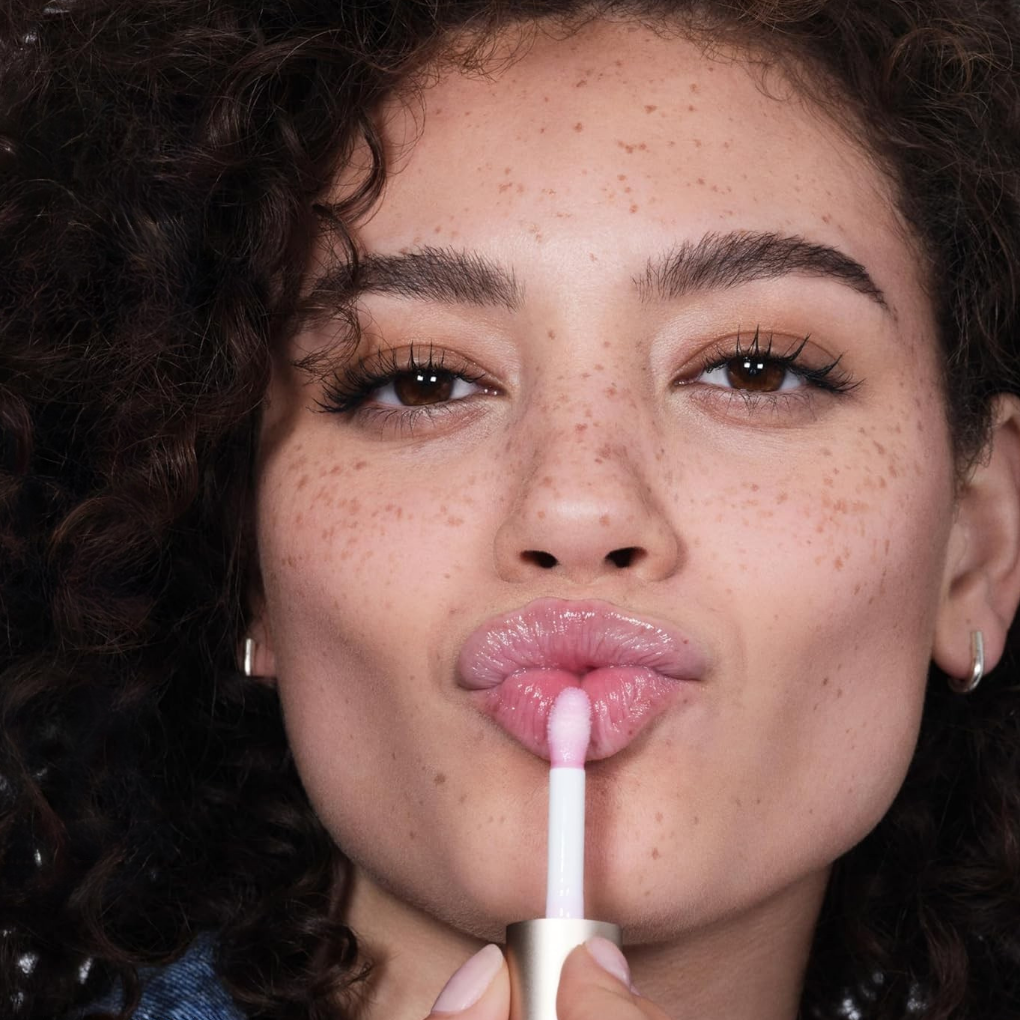
bareMinerals was founded in San Francisco in 1995 and is widely recognized as a pioneer in the clean beauty movement. Their Original Loose Mineral Foundation became a cult favorite for delivering coverage with just a handful of ingredients.
Beyond product innovation, bareMinerals supports social and environmental impact through the Power of Good Fund, which funds women’s empowerment initiatives, and partnerships with organizations like Room to Read to advance girls’ education worldwide.
Key Features and Product Highlights:
- Original Loose Mineral Foundation SPF 15: A talc-free, mineral-based powder foundation enriched with zinc oxide for natural sun protection.
- Complexion Rescue Tinted Moisturizer: A hybrid formula combining coverage with hydration, made with antioxidants and botanicals.
- Mineral Veil Finishing Powder: Lightweight setting powder that creates a soft-focus finish without parabens, phthalates, or synthetic fragrances.
- Strength & Length Serum-Infused Mascara: Conditions lashes with plant-based serums for healthier growth over time.
- Packaging: bareMinerals has committed to making 100% of its packaging recyclable, refillable, reusable, or made with recycled materials by 2026. Many products already feature FSC-certified paperboard, glass, and PCR (post-consumer recycled) plastics. Their refill programs and recyclable jars for powders highlight their push toward circular beauty.
- Certifications: Leaping Bunny certified cruelty-free, PETA-certified (select lines), FSC-certified packaging, with select products carrying Clean at Sephora certification.
How to Match Makeup to Skin Type and Lifestyle
Choosing nontoxic makeup is not just about safer ingredients. It is also about finding products that work for your skin and fit seamlessly into your routine. Here is how to match your clean beauty choices to your lifestyle:
- Consider Your Skin Type
- Sensitive or Reactive Skin: Look for fragrance-free formulas with soothing, plant-based ingredients like aloe vera or chamomile. Avoid synthetic dyes and plastics that can trigger irritation.
- Oily or Acne-Prone Skin: Mineral foundations with buildable coverage help absorb excess oil without clogging pores. Choose lightweight textures that let skin breathe.
- Dry Skin: Creamy foundations or tinted moisturizers with natural oils deliver hydration and a dewy finish, while skipping silicones that can feel heavy.
- Mature Skin: Products with antioxidants and skin-enhancing minerals create a smoother look without settling into fine lines.
- Think About Coverage and Finish
- If you like a natural, everyday look, go for light coverage or tinted moisturizers that enhance your skin without masking it.
- For more polished or long-lasting coverage, try buildable mineral foundations. Nontoxic powders and creams can give you a matte or dewy finish, depending on your preference.
- Choose the Right Application Technique
- Makeup brushes are ideal for precise blending, especially with mineral powders.
- Makeup sponges work best for cream or liquid products, helping you achieve even, natural coverage.
- Always clean tools regularly to keep them free from bacteria and product buildup.
- Match to Your Lifestyle
- Busy mornings: Stick with multipurpose products (like a tinted balm for lips and cheeks) to save time.
- Active lifestyles: Look for nontoxic formulas that are breathable and sweat-resistant without relying on waterproof plastics.
- Minimalist routines: Focus on a few essentials that double up—like a foundation that also protects with natural SPF.
Matching your nontoxic makeup to your skin type and lifestyle ensures you get the best performance without compromising safety.
Final Tips for Building a Nontoxic Makeup Routine
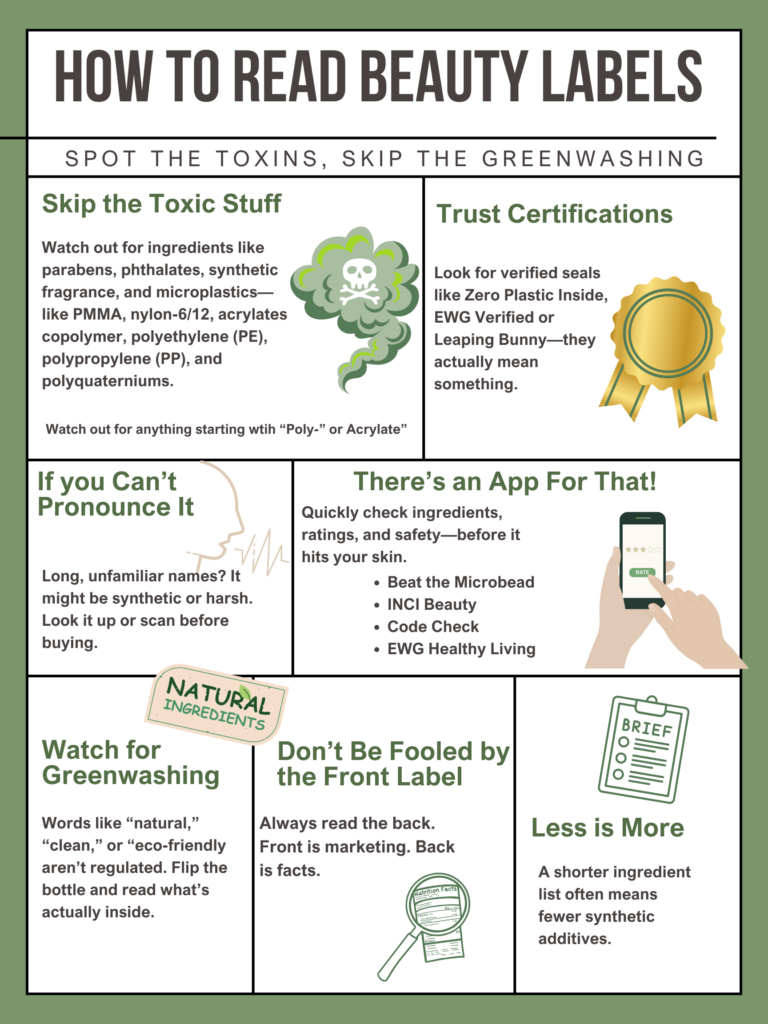
Making the switch to nontoxic, microplastic-free makeup doesn’t have to be difficult. A few simple steps can help you transition smoothly while getting the most out of your products:
- Start with the products you use most: If foundation or lipstick is part of your daily routine, start there. Swapping your most-used products first cuts down toxin exposure and delivers the most significant impact right away.
- Swap gradually, not all at once: You don’t need to throw out everything in your makeup bag. As you finish a conventional product, replace it with a cleaner, microplastic-free alternative.
- Read labels and certifications: Look for the ingredient names we listed earlier, and lean on trusted third-party seals like Zero Plastic Inside, COSMOS, EWG Verified, or Made Safe.
- Recycle and repurpose packaging: Many clean beauty brands use recyclable or refillable packaging. Take advantage of mail-back programs or local recycling to cut waste further.
- Pair with clean skincare: Makeup is only half the picture. Using natural cleansers, moisturizers, and sunscreens helps keep your skin barrier strong and reduces overall chemical exposure.
- Support transparent brands: Choose companies that are upfront about what goes into their products—and what’s left out. The more consumers demand transparency, the faster the industry shifts away from harmful plastics.
✨tip
Create a Routine
Treat this as creating a routine, not just swapping products. Each small shift adds up to healthier skin, less plastic waste, and a makeup bag you can finally feel good about.
Resources for Safe Product Selection
Even with ingredient lists and certifications, choosing safe, nontoxic makeup can feel overwhelming. Thankfully, some reliable tools and guides simplify the process and help you shop with confidence.
Ingredient Analysis Tools
- EWG’s Skin Deep Database – Rates thousands of beauty products and ingredients by hazard level.
- INCIdecoder – Breaks down cosmetic ingredient lists into plain language so you can quickly see what’s safe or questionable.
- COSDNA – A community-driven database that provides detailed safety and acne/irritation ratings for ingredients.
Mobile Apps for On-the-Go Scanning
- Think Dirty App – Scan barcodes to instantly see if a product contains toxins, microplastics, or other harmful ingredients.
- GoodGuide – Scores personal care products based on health, environmental, and social impact.
- Beat the Microbead App – Developed by the Plastic Soup Foundation, this app lets you scan ingredient lists to check for thousands of microplastics commonly used in cosmetics and personal care products.
Third-Party Certifications to Trust
- EWG Verified – Indicates products free from major toxins and microplastics.
- Made Safe Certified – Screens for thousands of harmful chemicals and synthetic plastics.
- ECOCERT – International certification for natural and organic cosmetics.
- USDA Organic – Ensures ingredients meet strict organic farming and processing standards.
Using these resources takes the guesswork out of shopping. With a quick scan or certification check, you can identify which makeup truly aligns with your health and sustainability goals.
Don’t Miss: Beyond Greenwashing: The Third-Party Certifications That Prove Brand Claims 👉 Curious which third-party certifications you can actually trust? Find out here →FAQs About Best Nontoxic Makeup Brands
Yes, the Microbead-Free Waters Act of 2015 banned solid plastic microbeads in rinse-off products like scrubs and cleansers. However, it does not cover other types of microplastics, such as liquid polymers and film-forming plastics often found in makeup. Many cosmetics can still legally contain them, so the safest option is to choose certified nontoxic brands.
Not always. Prices vary by brand. Options like River Organics or Honest Beauty are comparable to mainstream drugstore makeup. At the same time, luxury brands like Ogee or Inika are higher-priced because they use certified organic ingredients and sustainable packaging.
Yes. Most are formulated without synthetic fragrances, parabens, or harsh preservatives, making them gentler for people with eczema, rosacea, or acne. Many users find switching to clean formulas reduces irritation and improves overall skin health.
Check the ingredient list for names such as polyethylene (PE), polypropylene (PP), polymethyl methacrylate (PMMA), PET, nylon-12, or acrylates copolymer. These are all plastics commonly added for texture, shine, or staying power. Apps like Beat the Microbead or databases like EWG Skin Deep can also help you spot them quickly.
Look for trusted third-party seals such as EWG Verified™, COSMOS Organic, ECOCERT, Made Safe, or Leaping Bunny cruelty-free. These certifications screen products for harmful chemicals and help ensure formulas are free from microplastics and unnecessary toxins.
Makeup with microplastics and harsh chemicals doesn’t just affect your skin—it washes off into waterways, where plastics accumulate in fish, shellfish, and even drinking water. Nontoxic, microplastic-free brands reduce this pollution and often use recyclable or biodegradable packaging, making them safer for the planet too.
Final Thoughts on Nontoxic Makeup Brands
Switching to nontoxic, microplastic-free makeup is more than just a beauty choice; it’s a step toward protecting your skin, your health, and the planet. Every time you pick up a product made with safe ingredients, eco-friendly packaging, and trusted certifications, you’re sending a message that clean beauty matters.
You don’t have to overhaul your entire makeup bag overnight. Start with one swap: a mascara, a foundation stick, or a lip tint, and see how it feels. The brands highlighted here prove that performance and sustainability can go hand in hand, without the hidden plastics or toxins.
At the end of the day, the products you use every morning are a part of your daily routine, and they can also be part of a much bigger change. Choosing nontoxic makeup is one small but powerful way to align your beauty routine with your values and help reduce the plastic pollution that impacts us all.
Featured image is from Amazon.
💬When you shop for beauty products, what matters most to you: ingredients, performance, or sustainability? I’d love to hear your perspective—drop your answer in the comments below.
📚References
- Plastic Soup Foundation. (n.d.). Beat the Microbead. Retrieved September 5, 2025, from https://www.beatthemicrobead.org
- Plastic Soup Foundation. (2022). 87% of products from top ten cosmetic brands contain microplastics. Retrieved September 5, 2025, from https://www.plasticsoupfoundation.org/en
- U.S. Congress. (2015). Microbead-Free Waters Act of 2015, Pub. L. No. 114-114, 129 Stat. 312. Retrieved from https://www.congress.gov/114/plaws/publ114/PLAW-114publ114.pdf
- Environmental Working Group. (n.d.). Skin Deep® Cosmetics Database. Retrieved September 5, 2025, from https://www.ewg.org/skindeep
